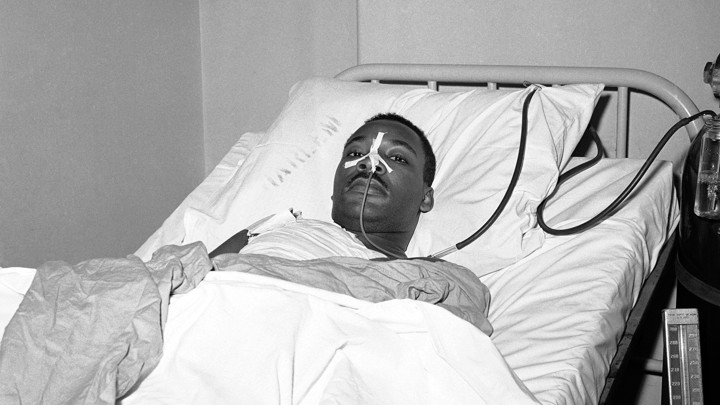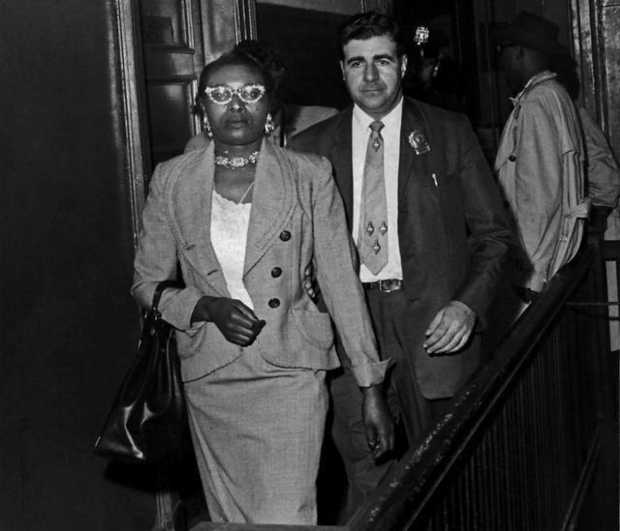The day was September 20, 1958. Dr Martin Luther King, Jr., then 29, was in a Harlem department store, signing copies of Stride Toward Freedom, his account of the 1955 Montgomery Bus Boycott which he led.
He was suddenly approached by a 42-year-old well-dressed woman, who asked him:
“Are you Martin Luther King?”
“Yes,” King replied, without looking up from where he was signing his book.
The stylishly dressed woman, who would later be identified as Izola Ware Curry, said: “I’ve been looking for you for five years,” and plunged a 7-inch, ivory-handled steel letter opener into King’s chest.

Curry had in her bra a loaded 25-calibre automatic pistol, which she wanted to use but was stopped before she could get to it, reported the Atlanta Journal Constitution.
She did not attempt to run but rather indicated: “I’ve been after him for six years.
“I’m glad I
Media reports state that when the police later arrived on the scene, they found King seated on a chair and calmly being attended to by supporters while the handle of the letter opener protruded from his chest – just below his collar.

Seeing the blade’s closeness to the heart of the civil rights leader, one of the officers, Al Howard warned him: “Don’t sneeze, don’t even speak.” King was rushed to the Harlem Hospital while his assailant was arrested. At the hospital, it took surgeons hours to remove the blade without killing him.
“In a painstaking operation, surgeons opened King’s chest, exposing his aorta, and removed the letter opener with a surgical clamp,” said an article on Mashable.

The doctors later reiterated that if King had sneezed, he would have died. Curry, the would-be assassin, was diagnosed with paranoid schizophrenia, and she spent the rest of her life in mental institutions.
The Georgia native, at the time of the incident, had an IQ of about 70 and was found not fit to stand trial, reported the Journal-Constitution.
Before stabbing King, the mentally disturbed woman had, for many years, had delusions that the NAACP was a Communist front and that members were persecuting her and preventing her from finding a stable job. As years passed, King became the centre of those delusions, according to The Times.

A psychiatric report, obtained in 2014, said Curry “believes she has been under constant surveillance and all her movements are known to the NAACP and
At the age of 98, after spending the rest of her life in psychiatric facilities, she passed away on March 7, 2015, in a nursing home in Queens.
King recalled the stabbing incident 10 years later in his “I’ve Seen the Mountaintop” speech of April 3, 1968.
“I want to say tonight that I too am happy that I didn’t sneeze. Because if I had sneezed, I wouldn’t have been around here in 1960, when students all over the South started sitting-in at lunch counters.
“If I had sneezed, I wouldn’t have been around here in 1961, when we decided to take a ride for freedom and ended segregation in interstate travel.
“If I had sneezed, I wouldn’t have been around here in 1962, when Negroes in Albany, Georgia, decided to straighten their backs up. And whenever men and women straighten their backs up, they are going somewhere, because a man can’t ride your back unless it is bent.
“If I had sneezed, I wouldn’t have had a chance later that year, in August, to try to tell America about a dream that I had had…”
The day after delivering his speech, the iconic leader was shot dead by a lone gunman, who was later identified as James Earl Ray in Memphis.

Born in 1929, King, an American Baptist minister, was the most visible spokesperson and leader in the civil rights movement from 1954 through to 1968.
King had in the year in which he died expressed worry over the slow pace of civil rights in America and the rise in criticism from other African-American leaders.

He had embarked on a series of demonstrations and gone through jail, apart from being threatened with death. He had made plans for another march on Washington to revive his movement and bring attention to scores of issues before he passed away.










